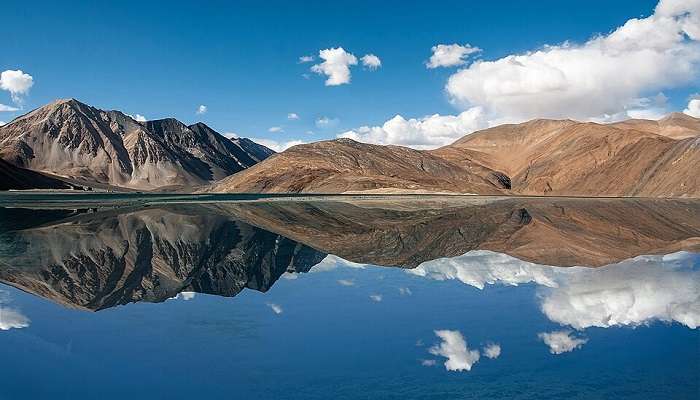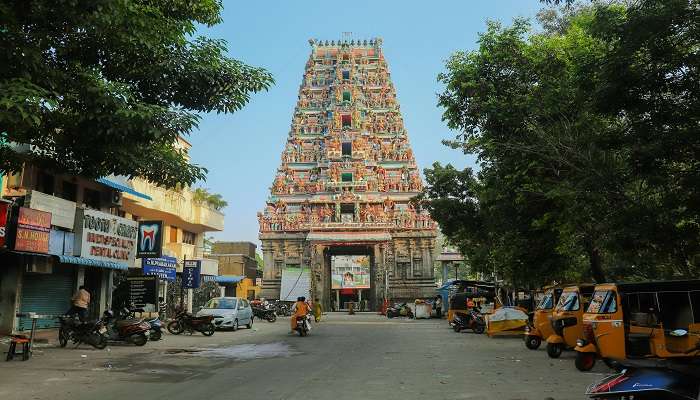Visit The Khas Mahal In Agra To Witness The Mughal Heritage In 2025
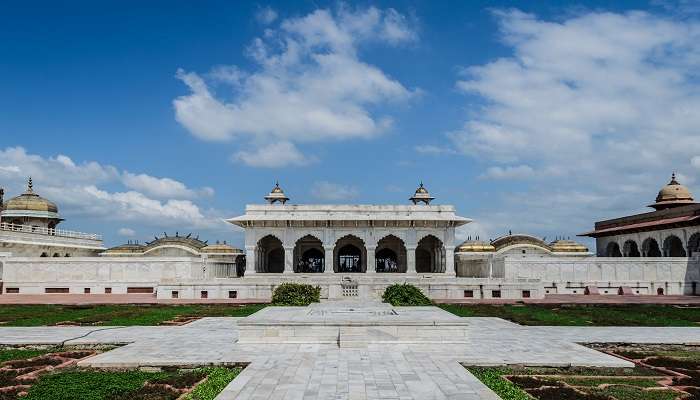
The city, home to the famous Taj Mahal, has outstanding architectural masterpieces that are still unearthing. Among all these gems, one remains relatively unknown compared to the others; Khas Mahal is one such palace that brims with stories of the magnificent Mughal artistry. Shah Jehan built it for the two favourite daughters of Shah Jehan, Jahanara and Roshanara; it has a beautiful tank in front with fountains, white marble pavilions and open courts.
The Story Of Khas Mahal
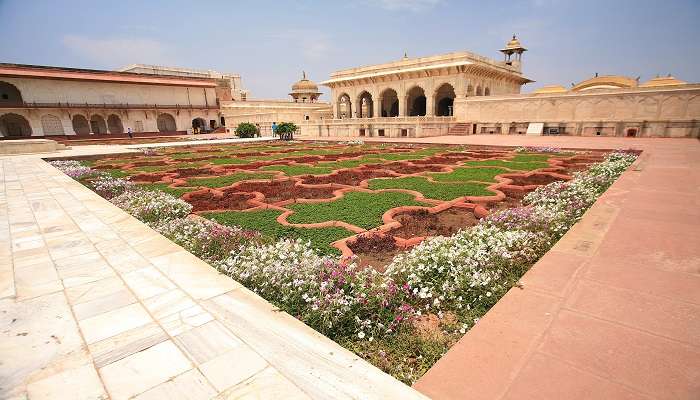
Khas Mahal is the private palace in Hindi that gave the Mughal Emperor Shah Jahan residence inside the bigger complex of the Agra Fort. The castle’s construction started around 1631 and was completed in approximately a decade. While the ambitious public architecture of the fort provided large halls and palaces for public circulation and state use, Khas Mahal provided a more intimate, paved living space for the emperor and his family.
According to historical records, there are some pieces of information that Mumtaz Mahal, the wife of Shah Jahan, lived in Khas Mahal, but there are certain opinions about it. Another theory to expound this is that Mumtaz Mahal occupied a palace sector called Jahangiri Mahal when she was organising the construction of the Taj Mahal. The lengthy section might contain a lot of floral work with different types of designs and decorative things, which may include her design preferences. Whatever the case, the existence of Khas Mahal makes one feel that it has some link to the true lovers who inspired the building of the Taj Mahal.
Also Read: Pathauli Village
A Tapestry of Mughal Architecture: Beyond the Basics
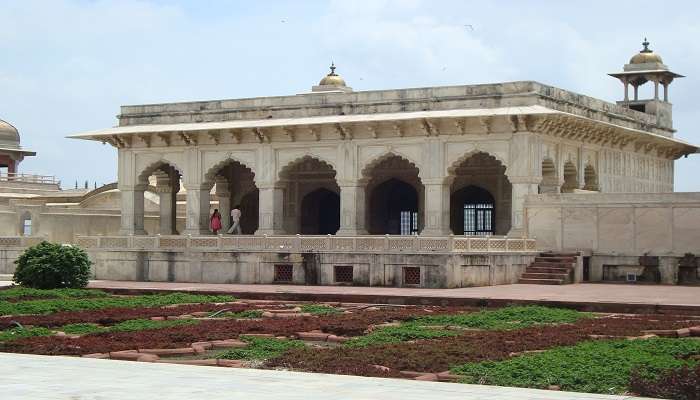
Khas Mahal is a magnificent building that exhibits an architectural mix of the pre-majestic style and the final full-fledged Mughal style during Shah Jahan’s reign.
Persian Influences: However, the architecture of Khas Mahal influences Persian architecture, in addition to the features specific to Timurid architecture.
Play of Light and Shadow: The Khas Mahal has windows and a façade decorated with jali work or latticework; these screens are not just for aesthetics. They allow daylight and air to enter the palace, thus relieving India’s hot June-July heat. The gaps created on the walls through the jali work also provide more play of light and shadow in the structural designs.
Geometric Harmony: Apart from the floral and ornate design work, the overall layout of Khas Mahal is based on harmonious geometry principles. Orderliness is seen in the mirror-image polarity, the application of arches and vaults, and the nonproportional courtyards, which create an aesthetic aspect.
A Glimpse Into The Royal Chambers
Here, we have listed out two chambers of the regal lifestyle of the Mughals,
1. Diwan-i-Khas (Hall of Private Audience)
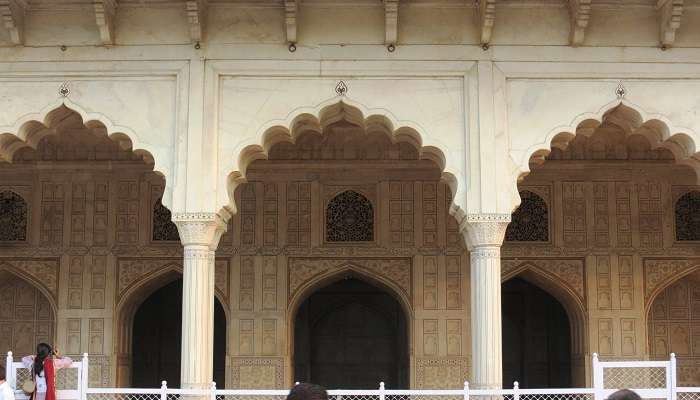
This grand hall had a particular function as the emperor’s Zhong Ting or inner and private audience hall. It probably contained luxurious furniture, expensive floor coverings, and beautiful ornaments such as tapestries, which showed the emperor’s refined choice.
Tip: Plan your trip to the place as per the schedule.
Related Post: Fatehpur Sikri
2. Jahangiri Mahal
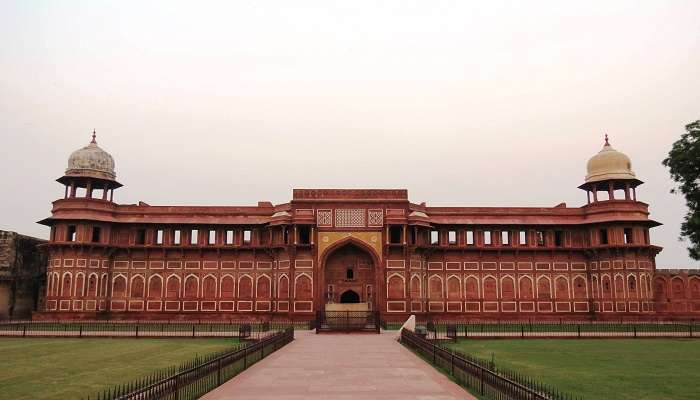
The interior of this part of Khas Mahal explains the living conditions of the Royal Family to a certain extent. Infrequent use of colours, application of figures and designs of flowers, stuccowork, and white marble gives a feeling of grace. Visitors may not view the two chambers mentioned above, but they probably contained royal-owned items, artwork, and other things that implemented the royal lifestyle.
Tip: Witness the beauty of the gems properly.
Hidden Gems: Unveiling the Palace’s Secrets
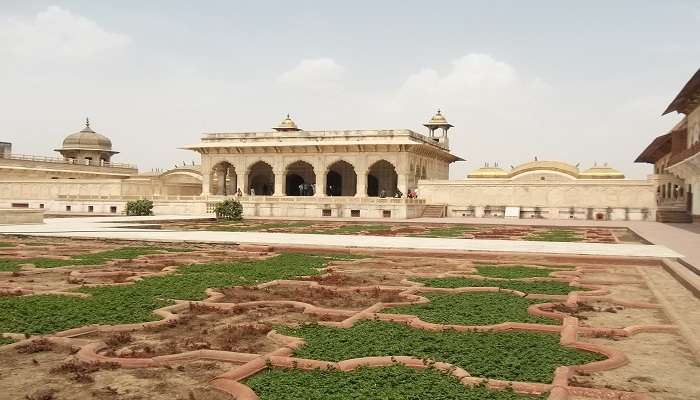
Machhli Bhavan (Fish House): This double-storey building near the Yamuna River was the pleasure palace with facilities to view the river. To derive the name Machhli Bhavan, it could be hypothesised that a fish market was nearby in earlier decades. As to the exact function of the building and whether or not it served its intended purpose, some suggestions include using the facility to watch videos or conduct recreational activities in the evening.
Anguri Bagh (Grape Garden): Adjacent to the Khas Mahal is a quadrilateral garden called the Anguri Bagh, which has two walls on both sides. This garden, which is equally partitioned by waterways, was possibly used to cultivate grape vines for fruit trees, for it was a section of serenity implanted amidst the fort area.
Hidden Passages and Chambers: Some histories and myths inform us about lurking corridors and rooms behind and within the fort area of Agra, including Khas Mahal. This is why these concealment areas might have been used for other functions, including an escape corridor or a hiding place for assets. Although their existence has not been proven to this day, these legends cast a significant amount of mystery into the palace’s existence.
Related Post: Diwan-e-Khas
Exploring Khas Mahal: A Journey Through Time
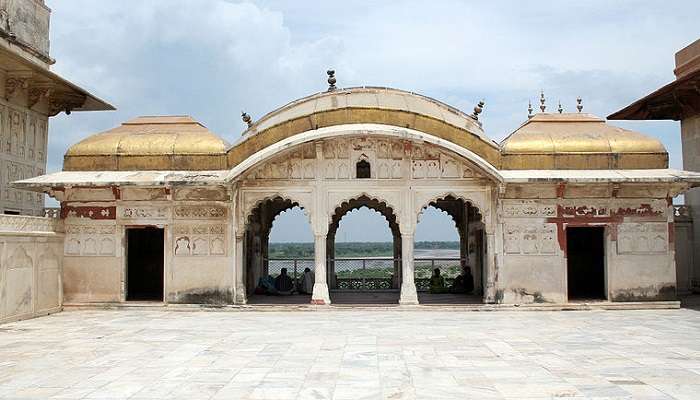
Location: Khas Mahal is conveniently located within the Agra Fort complex, a UNESCO World Heritage Site on the west bank of the Yamuna River, a prominent landmark in Agra.
Entry Fee: The entry fee to Agra Fort includes access to Khas Mahal. A single ticket fee applies to both monuments (separate charges might apply for specific areas within the fort complex). The latest ticket prices are on the official website of the Archaeological Survey of India (ASI).
You May Also Like To Read: Kaulakha Village
That Khas Mahal used to be a private place. Therefore, it is crucial to remember that private residences also provide glimpses of a realm’s elite culture and aesthetic sensibilities. To learn more about the architectural beauty of the place or its history along with some untouched gems of the Mughal era, you get to know more about the aesthetic senses in arts of the Mughals and the amount of detailing that went into creating such masterpieces along with the affluent lifestyle they embraced. Purchasing your tickets online or, better still, checking the ASI website for the latest information is advisable. So, plan your trip to Agra and explore the beauty of the place.
For our editorial codes of conduct and copyright disclaimer, please click here.
Cover Image Credit:Ms Sarah Welch for wikimedia commons
Frequently Asked Questions About Khas Mahal
Is there a dedicated gift shop or souvenir store near Khas Mahal?
There needs to be a dedicated gift shop within Khas Mahal itself. However, you'll find souvenir shops outside the Agra Fort complex selling various items like miniature replicas of the fort, Mughal artefacts (replicas), textiles, and handicrafts.
What are some nearby restaurants or cafes for refreshments after visiting Khas Mahal?
Several restaurants and cafes around the Agra Fort complex cater to diverse tastes and budgets. You can find options serving Indian cuisine, international fare, and refreshing beverages.
Are there any light and sound shows held at Khas Mahal?
There aren't any dares, only a few light and sound shows at Khas Mahal. However, the Agra Fort hosts a captivating light and sound show in the evenings, narrating the fort's history through sound and light effects. Consider attending this show after exploring Khas Mahal for a captivating end to your visit.
Is photography allowed inside Khas Mahal?
Yes, photography is generally permitted within Khas Mahal. However, using flash photography might be restricted in some areas to protect the delicate artwork and interiors. Always follow any posted signage regarding photography restrictions.
What are some filming or photography permit requirements for professional shoots at Khas Mahal?
You should obtain specific permits from the Archaeological Survey of India (ASI) for professional photography or filming within Khas Mahal and the Agra Fort. Contact the ASI office in Agra for detailed information on the application process and associated fees.
People Also Read:
Taj Mahal Sundar Mahal Hawa Mahal

Passionate Marketing Student with a flair for storytelling, eagerly embarking on a journey within the vibrant world of travel. Excited to merge analytical acumen with creative skills to elevate the editorial landscape of the travel industry.



